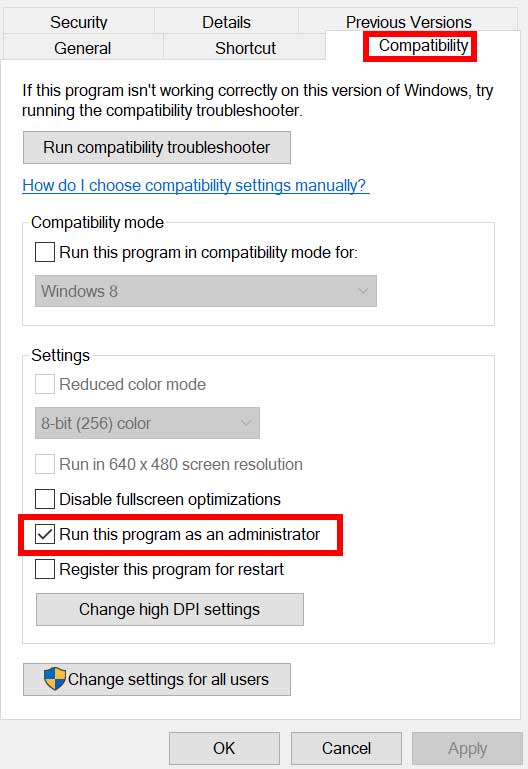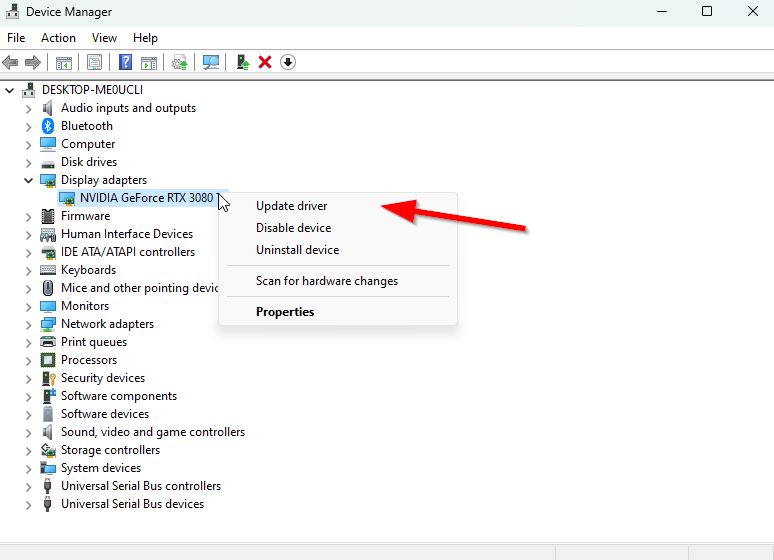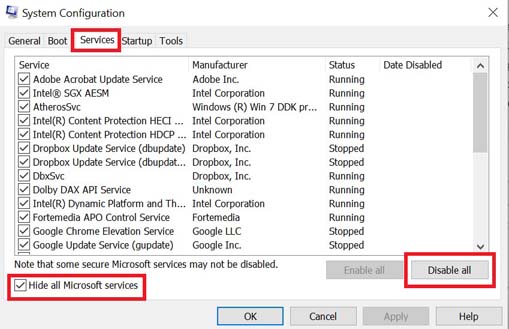FiveM is one of the GTA V modifications that enables you to play multiplayer mode on customized dedicated servers. Cfx.re has done it really well, allowing servers to use custom mods like weapons, vehicles, maps, etc. At the same time, FiveM AI allows servers to keep the original game AI without modifying the core GTA V installation. It seems that FiveM Low GPU usage eventually troubles a lot of players while playing Grand Theft Auto V or even during the startup sessions.
Though Grand Theft Auto is one of the successful lineups in the gaming industry, affected players can’t be able to run FiveM modifications in GTA V because their machines lack enough system resources. The original game has been running since 2013, but some known bugs are still present, which might appear while starting or connecting to the game servers. A system resource bottleneck between GPU, CPU, and RAM on the PC causes low GPU Usage.
Also Read

Page Contents
- FiveM Low GPU Usage Fix
- 1. Check the System Requirements
- 2. Run FiveM as an Administrator
- 3. Set the Dedicated Graphics Card
- 4. Update the Graphics Driver
- 5. Adjust the FiveM Graphics Settings
- 6. Clear the FiveM Cache Files
- 7. Close Background Tasks
- 8. Run the SFC Scan
- 9. Disable Startup Apps
- 10. Perform a Clean Boot
- 11. Disable Antivirus
- 12. Adjust the Graphics Card Program Settings
FiveM Low GPU Usage Fix
Sometimes any incorrect graphic settings in the game, an outdated graphics driver, third-party background apps, or an outdated application version, etc can trouble FiveM users. Luckily, a couple of workarounds mentioned below should come in handy for you. So, without wasting any more time, let’s jump into it.
1. Check the System Requirements
First, you’ll need to check for the system requirements of the FiveM application on the PC to ensure there is no issue with the compatibility. If the system requirements don’t compatible enough then upgrade the specific hardware part to make it compatible.
Minimum:
- CPU: Intel Core 2 Q6600 @ 2.40GHz / AMD Phenom 9850 @ 2.5GHz
- GPU: NVIDIA 9800 GT 1GB / AMD HD 4870 1GB / Intel HD GT2
- RAM: 8GB (4GB may work)
- HDD: 72GB + ~4GB
Recommended:
- CPU: Intel Core i5 3470 @ 3.2GHz / AMD X8 FX-8350 @ 4GHz
- GPU: NVIDIA GTX 660 2GB / AMD HD 7870 2GB
- RAM: 16GB
- HDD: 72GB + 8GB
2. Run FiveM as an Administrator
Make sure to run the FiveM app file on your PC as administrator access to allow the User Account Control (UAC) access to the system. In some cases, your system requires the UAC access permission to run a program which is quite important. By following the steps below you’ll have to allow the admin access for once and it won’t ask you for the same again. To do so:
- Go to the installed FiveM application directory.
- Right-click on the game application file on your PC.
- Click on Properties > Click on the Compatibility tab.

- Click on the Run this program as an administrator checkbox to enable it.
- Once done, click on Apply and then OK to save changes.
3. Set the Dedicated Graphics Card
It’s highly recommended to use the dedicated graphics card on the PC to run graphics-intensive games like GTA V and FiveM smoothly. It’ll reduce game stutters, lags, and frame drops apart from GPU not using 100% issues. If you don’t know which settings you need to adjust, then follow the steps below.
For Nvidia GPU:
- Right-click on the blank desktop screen > Open Nvidia Control Panel.
- Go to 3D Settings > Click on Manage 3D Settings.
- Open Program Settings > Select FiveM from the list.
- Select the Preferred graphics processor for this program from the list.
- Once done, you can see it as High-Performance Nvidia Processor.
- Make sure to save changes and reboot the PC.
For AMD GPU:
- Right-click on the blank desktop screen > Open AMD Radeon Settings.
- Head over to Additional Settings > Go to Preferences.
- Click on Power > Click on Switchable Graphics Application Settings.
- Select FiveM from the list.
- If the game is not visible, select Add Application to include the game.
- Once done, select High Performance from Graphics Settings.
- Finally, reboot the PC to apply changes.
4. Update the Graphics Driver
An outdated or corrupted graphics card driver can trigger multiple issues with the games or system performance while running programs. It’s highly recommended to check the graphics driver update. To do so:
- Press the Win+X keys to open the Quick Link Menu.
- Click on Device Manager from the list > Double-click on Display adapters.
- Right-click on the dedicated graphics card that you’re currently using.

- Click on Update driver > Choose Search automatically for drivers.
- If there is the latest update available, it’ll automatically download & install the latest version.
- Once done, restart the computer to apply changes immediately.
Alternatively, you can manually download the latest version of the graphics driver and install it on the PC via the official website. Make sure to download the graphics driver file respective to your graphics card model and manufacturer. Nvidia graphics card users can update the GeForce Experience app via the Nvidia official site and AMD graphics card users can visit the AMD website for the same. While Intel graphics users can visit here.
5. Adjust the FiveM Graphics Settings
You should also try adjusting the FiveM graphics settings at your end by following the steps below to ensure there is no issue with the FiveM graphics settings. Sometimes graphical incorrect settings can trigger render resolution with the display monitor.
- Open FiveM on the PC > Connect to any server.
- Press the ESC key to open the menu.
- Click on the Settings tab > Select the Graphics category in the left panel.
- Set the DirectX version to 11 > Set the Render Resolution to the native display resolution of your monitor.
- Finally, save the changes.
6. Clear the FiveM Cache Files
Sometimes clearing the FiveM cache files on the PC might occur performance issues with the system like low GPU usage. It’s better to follow the steps below to clear cache files.
- Open the Start menu and search for FiveM.
- Right-click on FiveM from the search > Select Open file location.
- Now, locate and right-click on FiveM > Select Open file location again.
- Double-click on FiveM Application Data in the folder.
- Open the data folder.
- Press and hold the CTRL key & click on the cache, server-cache, & server-cache-priv folders.
- Next, press the Delete key and confirm that you want to delete.
- Once done, restart your PC, and run FiveM.
7. Close Background Tasks
Unnecessary background running tasks or programs can eat up a lot of system resources like CPU or GPU or Memory usage literally reduces system performances. So, the startup crashing, stuttering, or low system resource usage can often cause several issues whatsoever.
- Press the Ctrl+Shift+Esc keys to open Task Manager.
- Now, click on the Processes tab.
- Click to select the third-party task that you want to close.
- Next, click on End Task to exit the process.
- Do the same steps for each task individually. [Do not close system tasks]
- Once done, close Task Manager, and restart your system.
8. Run the SFC Scan
SFC (System File Checker) tool is useful to check whether any program file or a disk drive has some issues not on a Windows system. If there is an issue, you can try manually fixing it by following the steps below. To do this:
- Click on the Start Menu and type cmd.
- Now, right-click on Command Prompt from the search result.
- Select Run as administrator > If prompted, click on Yes to give admin privileges.
- Type the following command in the cmd window and hit Enter to execute it:
sfc /scannow

- Now, wait for the process to complete.
- Wait for some time which depends on the disk size and problematic data.
- Once done, restart your PC to change effects immediately.
9. Disable Startup Apps
You should try disabling the startup apps on the system by following the steps below to ensure there is no issue. The chances are high that turning off startup apps might help in fixing system resource usage.
- Press the Ctrl+Shift+Esc keys to open Task Manager.
- Go to the Startup tab > Click on a program that unnecessarily runs after startup.
- Then click on Disable to turn it off.
- Make sure to repeat the same steps for all unnecessary startup programs.
- Once done, restart your computer to apply changes.
10. Perform a Clean Boot
Multiple users claimed that performing a clean boot on the PC did fix the system boot-up issue because some apps or tasks start at the very beginning. These tasks run all the time and consume a lot of system resources. You should follow the steps below to do so:
- Press the Win+R keys to open the Run dialogue box.
- Type msconfig and hit Enter to open System Configuration.
- Go to Services > Click on Hide all Microsoft services to enable it.

- Now, click on Disable all so that the rest of the services gets turned off.
- Click on Apply and then OK to save changes.
- Next, go to Startup > Click on Open Task Manager.
- Click on the Startup tab > Ensure to select the specific task that has a higher startup impact.
- Now, click on Disable to turn it off.
11. Disable Antivirus
It’s suggested to always check for the real-time protection status of the antivirus software whether any kind of blocking works without your consent or not. Sometimes aggressive antivirus protection can cause several issues with the program running on the Windows system. You can check the steps below to turn off the Windows antivirus program.
- Go to the Start menu and type Windows Security.
- Click on Virus & threat protection to open it.
- From the Virus & threat protection settings segment, click on Manage settings.
- Now, make sure to Turn Off the Real-time protection feature.
12. Adjust the Graphics Card Program Settings
Last but not least, you’ll have to change a couple of settings in your graphics card program to optimize your system performance on the PC. We’ve mentioned both the Nvidia and AMD graphics card steps depending on whatever you use.
For NVIDIA Control Panel:
- Right-click on your desktop screen.
- Click on NVIDIA Control Panel > Click on Manage 3D settings.
- Select Use the advanced 3D image settings from the first menu.
- Then choose Take me there > Make sure to set the following options accordingly.
- CUDA – GPUs to All
- Low Latency Mode to On
- Select your GPU under OpenGL Rendering GPU
- Power Management Mode to Prefer Maximum Performance
- Shader Cache to On
- Texture filtering – Quality to High Performance
- Threaded optimization to Auto
- Click on Apply to save the changes.
For AMD Radeon Software:
- Go to the Start menu and type AMD Radeon Software.
- Go to Gaming > Click on Global Graphics.
- Disable the Radeon Chill option.
- Click on Advanced.
- Now, Disable the following options:
- Frame rate target control
- Morphological Anti-Aliasing
- Anisotropic Filtering
- OpenGL Triple Buffering
- 10-Bit Pixel Format
- Set Texture Filtering Quality to Performance.
- Enable the Surface Format Optimization option.
- Set GPU Workload to Graphics.
- Close the program and reboot the PC.
That’s it, guys. We assume this guide was helpful to you. For additional queries, you can comment below.
